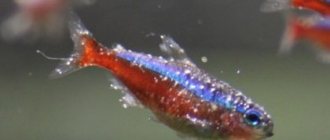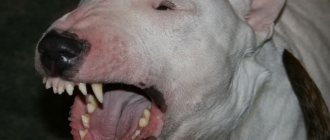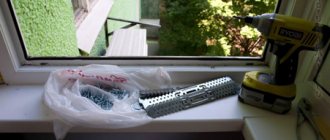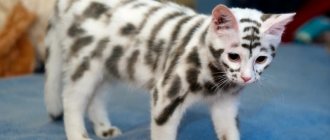The class of insects is the most diverse in the animal kingdom. It has more than 1 million species. Some domestic insects in the apartment have become constant companions of a person, settling in his home. They are even called house insects, although people do a lot to get rid of them.
They are not all equally dangerous to humans, so types of domestic insects are divided into the following categories:
- Parasites and pests.
- Neutral and random.
Let's take a closer look at the biology of each group and how to get rid of domestic insects.
Dust mites
As unpleasant as it may be, there are dust mites in every apartment. Because they feed on dead skin cells, dust mites can live on any plush surface that contains tasty particles. For example, carpet, upholstery, bedding, children's toys.
It is impossible to completely eradicate them, but it is possible to reduce their numbers by practicing regular cleaning. Wash bed linen in hot water at least once a week, regularly clean carpets and furniture with a vacuum cleaner.
To remove dust mites from stuffed animals or items you don't want to wash, place them in the freezer. Seal the items in a ziplock bag and place it in the freezer for at least 48 hours. Dust mites will not survive deep freezes.
Mosquitoes
In mosquitoes, only females suck blood because of the protein necessary for the full development of embryos in the eggs. Male squeak mosquitoes feed on plant sap.
Another species, the malaria mosquito, when bitten, can infect a person with malaria, the causative agent of which is the simplest single-celled animal - Plasmodium falciparum. The malaria mosquito is recognized by its characteristic landing.
The development of mosquitoes is inextricably linked with water. Therefore, they are frequent inhabitants of damp basements and areas near natural bodies of water. In private homes and cottages, mosquito nets protect against mosquitoes. Also, many ointments and creams with repellent properties have been created against them.
But the most effective are:
Smoke bombs "Quiet Evening"
The active ingredient in them is permethrin (10%) - a nerve-paralytic insecticide. It is low toxic to humans and pets. The insecticide is released in the form of tiny droplets with high penetrating properties. The fumigation properties of “Quiet Evening” checkers are manifested both in open space and indoors. Valid for 2 weeks.
One checker with a damage area of up to 300 m2 costs about 500 rubles.
- Review of the most effective smoke bombs and reviews of their use -
Bracelet BUGSLOCK
You can also protect yourself from mosquitoes with a simple accessory in the form of a Korean-made BUGSLOCK bracelet. It lasts for 200 hours. The bracelet is safe even for children. Contains citronella and lavender oils.
Costs about 100 rubles.
Household insect pests are a large group of arthropods that harm a person not directly, but indirectly, that is, they encroach on his food, clothes, household items, without touching the person himself.
Weevils
Weevils enter the apartment from the store. Adult weevils burrow into rice and other grains to lay eggs. You may not know you brought pests home until they hatch and crawl all over your pantry!
How to get rid of insects in the house? Just. Remove uncovered dry foods including flour, oats, rice, pasta, packaged foods. Throw away any unopened boxes such as soup mixes, gelatin.
Even if weevils don't eat these foods, they can get there to hide, then emerge later to contaminate the food. After discarding contaminated food, clean your pantry shelves. Spray the insecticide over the entire area. Once the liquid dries, you can replenish the supply.
Insects in the apartment
The appearance of small white bugs in an apartment will surprise the most experienced homeowner. Among the many types of insects, there are several similar ones, which may turn out to be white, beige or transparent.
Below are photos and names of white insects in an apartment or house:
- silverfish - small bugs up to 1 cm long, having a white, light gray or translucent, elongated body ending in 3 hairs; they are active only at night and can move quickly;
- woodlice - gray, gray-white or brown individuals, the body of which is divided into segments, each of which has a pair of legs, belong to the type of land crustaceans, breathe with gills - such insects are found in the house from dampness and their main diet consists of plant debris and water;
- mosquitoes and larvae - prefer to rest during the day in a room with high humidity;
- sewer beetle - distinguished by its gray-black color and large size (up to 3 cm), a strong shell that protects it from being crushed, very agile and fast, prefers warm and damp places;
- spiders, midges, centipedes or ants - are able to penetrate from the basement or neighboring apartment through ventilation pipes;
- small black bugs in the bathroom, called beetles or flour beetles, feed on cereals and bulk foods.
Insects in the apartment and bathroom
Carpet beetles
These are the most common household insects in the world. An adult carpet beetle will not harm the apartment. Unfortunately, the same cannot be said about their larvae. Carpet beetle larvae make holes in rugs, curtains, upholstery, clothing, and books.
Find out more Mantis bite: danger to humans
Carpet beetles are not known to eat dried foods such as flour and cereal. They like to hang out where: woolen clothes, carpet, fluff, crevices, corners of cabinets, drawers. You may not even know there is an infestation until you notice the damage caused by the pests.
If you notice something suspicious, roll up your sleeves and start cleaning. Thoroughly dust and vacuum to remove cobwebs that protect these house insects. Then wash the clothes from the closet or send them to the dry cleaner.
Finally, treat the carpets with an insecticide, boric acid, or diatomaceous earth to kill any remaining larvae.
Information for beginners
If you are a novice entamologist, start breeding insects from representatives of the fauna of our region. These can be flying insects that are well adapted to local climatic and natural conditions and provide useful products, for example, butterflies or bees.
Beneficial flying insects of our region are bees.
The honey bee has another name - “apis melifera”. There is nothing unusual in her appearance, but in terms of productivity it is difficult to find equals for her. These flying chemical laboratories provide people with a lot of unique substances that have healing and valuable properties.
Here are just some of the useful waste products of bees:
- propolis;
- wax;
- beebread;
- royal jelly;
- honey, etc.
Some product names are found in books on traditional medicine, others in manuals for fortune telling and magical manipulations, and there are those that are used in everyday life and at work.
Centipedes
Millipedes and centipedes are actually good insects. They do not destroy the house or pollute the pantry. Instead, they feed on poorly domesticated insects such as termites, moths, and cockroaches. They love to eat silverfish, beetle larvae, and spiders.
But if you just don't want to coexist with these multi-legged neighbors, use a trap or spray insecticide around baseboards, doors, and windows.
Prevent future infestations by sealing cracks and crevices where they could enter your home. Millipedes live in humid environments, so invest in a dehumidifier.
Fruit midges
It's amazing how quickly a fruit fly infestation gets out of control. You may notice one fly buzzing around the fruit in the morning and then come home from work to see half a dozen more. It's not your imagination. These flies are multiplying – and fast!
The larvae hatch 24 hours after the eggs are laid. Therefore, you need to act quickly to get rid of them. Cut off access to food supplies. Store soft fruits in the refrigerator.
In addition, immediately wipe cutting boards and tables after preparing food. Take out the trash daily. If you notice a few fruit flies despite these preventive measures, create a simple homemade trap by filling a small glass halfway with apple cider vinegar.
Then add a tablespoon of dishwashing liquid and fill the glass completely with warm water. The flies will fly in, but not fly out.
Name and meaning of the most common insects
ladybugs
Small and fast bugs have different colors of the body and the color of the dots. Representatives of all 70 species exterminate different types of aphids and other pests. Our ancestors also drew attention to the fact that where there are a lot of these cute bugs, the harvest will be excellent.
Ladybugs in the photo.
Gallica
Aphidamiza (pictured below), unlike pear galitsa, does not spoil the leaves, but, on the contrary, by poisoning the aphids with a poisonous liquid during a bite, it destroys them. The larvae that feed on it grow and develop, and over time, falling to the ground, they become cocoons.
Spiders
Spiders are different, but they all help people fight different types of pests.
Ground beetles
Ground beetles (photo below) and their larvae eat the eggs of wireworms and other parasites, but when pesticides are added to the soil, these “garden orderlies” immediately die. Comfortable conditions for them are foliage, sawdust, piles of stones or simply open ground.
Stink bugs
Stink bugs typically live and breed outdoors, but when temperatures get cooler they often sneak indoors to overwinter. If you see these shield bugs, do not try to squash them.
When disturbed, stink bugs live up to their name by emitting a foul odor that only attracts more stink bugs. Try to eliminate insects with a vacuum cleaner.
The only catch is that when you're done, you'll have to clean out the bag at a safe distance from your home.
Find out more How to get rid of sugar silverfish in an apartment or bathroom
Fleas
The list of bloodsuckers continues with fleas. They are not attached to humans like bedbugs and easily change their owner. Most often they parasitize domestic animals, which is why they are found near their roosting areas. The danger of fleas is not only that their bites are painful, itchy and can lead to the development of pustules on the body.
They are also carriers of deadly infections for humans, such as typhoid, plague, brucellosis and encephalitis, and therefore require quick and effective disinfestation measures. With the right approach, fleas will disappear, only to do this you will have to treat the pets themselves, their bedding and resting places. Flea larvae can be found behind baseboards or between floorboards, so the second step should be disinfestation of the entire apartment.
- What do domestic flea bites look like and why are they dangerous? Read here
You can get rid of fleas with the help of the drug
Delta Zone
The active ingredient in it is deltamethrin (2.5%). The product is active for 2 months. The drug is safe for people and pets. It has both intestinal and contact effects.
A 50 ml bottle costs about 600 rubles.
- You can read about the benefits of the drug and order it here -
Ants
Ants are tiny but merciless house invaders. They come to the apartment for food, water and shelter. This means that the kitchen and bathroom are their main goals. Although traps are very effective at killing ants, they are not entirely safe for use in areas where small children or pets may enter.
If you don't want to use traditional poisons, there are a number of natural remedies you can try. Once these pests have been driven away, discourage them from returning by vacuuming regularly, wiping down surfaces every day to remove their scent. Take out the trash every day.
They eat crumbs and come when it is cold, damp, and also when it is hot and dry. House ants do not cause damage to homes and do not carry diseases. Watch out for carpenter ants. They do not eat the tree, but they build nests inside.
Insect habitats
Absolutely all insects cannot do without water, therefore, when they get into an apartment, they look for rooms and places in them located closer to sources of moisture:
- pipes (water supply and sewerage) on which condensate accumulates;
- hard-to-reach and well-hidden areas in the bathroom, near communications;
- wet or damp rugs on the floor, various hygiene products with moisture residues;
- places where dust accumulates and is not removed (the floor under the bathroom, the backs of shelves in a cabinet, etc.).
The appearance of white or gray bugs in the bathroom is most often caused by poor sanitary conditions in the room. In addition, some insects may come from neighbors after baiting has been carried out in their apartment. Some exceptionally tenacious specimens then migrate in search of a new home.
Cockroaches
Cockroaches are a problem especially in big cities. If you see one - usually in the kitchen or bathroom - you can be sure there are many more unseen. Once they have moved in with you, it is difficult to get rid of them. Take decisive, quick action.
Place traps under the sink, behind the toilet, near the refrigerator, or other places where house pests may be hiding. Change traps and regularly apply insecticides to control new cockroaches as they appear.
Also, take preventive measures to make the apartment less attractive to them. Get rid of food sources by cleaning up immediately after eating, storing food in sealed containers, and taking out the trash daily.
Remove leftover food from pets' bowls when dogs and cats have eaten.
These pests cause problems. They contaminate food, destroy paper, fabrics, cause asthma, allergies, and bring bacteria wherever they go. The most common type is the German cockroach . One female produces up to 30,000 offspring per year.
Look for them in kitchens, bathrooms, warm rooms, near food, water, behind paintings and, of course, in your nightmares.
Types of pests living in your apartment or What kind of insects are in the apartment (photo)
Insects today are the largest class of animals, which includes more than 1 million species found everywhere. Not all of them coexist with humans, but the order of parasites also has more than one hundred representatives. Therefore, it is more convenient to classify the most popular of them based on the damage that household insects and pests cause.
Insects that threaten humans and animals
Cockroaches
Perhaps these heat- and moisture-loving pests are the most unwelcome guests in any apartment. As a rule, nocturnal, during the day parasites prefer to hide in cracks, holes and other dark places. The harm they cause is secondary. The insects themselves, living in the house along with humans, are safe. Start eating the most delicate areas of human skin - the maximum they are capable of due to severe hunger. The danger is posed by numerous infectious diseases (such as dysentery, hepatitis or helminthiasis), which cockroaches act as carriers.
Fleas
These indoor insects are familiar to most pet owners. Living either among the fur of pets or in any part of the house (but not higher than 30-50 cm from the floor level), they themselves are sources of only 2 human diseases - pulicosis and sarcopsillosis. However, fleas serve as carriers for a whole range of bacteria, viruses and infections. And don't forget about pets. Even if the animal manages to avoid infection, regular itching and blood loss are not pleasant sensations.
+7(495)255-38-53
Unified number of the sanitary and epidemiological station in Moscow
House bugs
Adhering to a nocturnal lifestyle, these insects in the apartment prefer to occupy secluded dark corners, inaccessible to the human eye, which would also be located not far from the victim’s sleeping area.
In other words, you should look for them in cracks and crevices, behind paintings and peeling wallpaper, in cabinets and sockets, in furniture. As for the danger, the main threat posed by the parasite is its bites. For ordinary people, they only threaten with itching and minor redness, while in allergy sufferers they can provoke an acute attack, and in children (if repeated regularly) they can lead to the onset of iron deficiency anemia. What is the cost of pest control services?
Each case is individual, the exact cost is specific to your case, check with the operator at the unified phone number of the SES in Moscow
Parasites that harm things
Ants
Although the species of these insects live mainly in nature, there are also representatives (for example, red ones) that prefer to live next to humans. They pose a threat to everything that is of gastronomic interest to them. This means that the following are at risk: food, waste and garbage (which makes ants passive carriers of various infections), entomological collections, wooden interior items, etc. The difficulty in removing these parasites lies in the fact that the colony will exist as long as the queen is alive, and the nest, as a rule, is specially formed in places where a person cannot get to without additional effort.
Mole
Household insect parasites such as moths are the main headache for lovers of fashionable outfits. Capable of covering an impressive distance in a day and penetrating into the smallest crevices, adult individuals are themselves safe, because. lack oral apparatus. The damage they cause is that they lay eggs in clothes that are stored in a dark (or better yet, damp) place. In just a couple of weeks, up to 100 caterpillars hatch from one clutch, which means that all the clothes in the house, carpets, rugs, fur and wool products, furniture upholstery and feather decorations are in danger of serious damage. Also at risk are toothbrushes and piano strings.
Grinder beetles
These insects have two popular species in the apartment: wood and grain. As you can easily guess from the name, they cause harm either to wooden utensils or dry products, which have to be thrown away even when stored in a container. Bread grinders are not hard to spot. You just need to periodically sort through your supplies. With trees, everything is different. By eating wood, the parasites make deep tunnels in the products, and their presence is revealed only by the characteristic noise from the jaws and small holes on the surface, which are becoming more numerous every day.
Insects that parasitize plants
Woodlice
For humans, these insects that live in apartments and private houses are absolutely safe. Being vegetarians, they feed exclusively on plants (both partially decomposing and living), which means vegetable gardens, orchards and all those flowers/crops that are inside the house (for example, flowers on the windowsill or seedlings) are at risk. Woodlice are nocturnal, while during the day they prefer to rest in dark places characterized by high humidity (such as a bathtub or basement). Even after baiting some of the insects in the room, a so-called “bag” fold may remain, from which a new generation of parasites will then develop.
Whiteflies
Another household pest is insects that parasitize mainly on plants such as cabbage or strawberries. Other crops located nearby are also under threat, because... sooty fungi (“mob”), which develop on the excrement of parasites, can spoil the appearance of any plant. Whiteflies themselves act as carriers of a whole range of viral diseases, such as chlorosis, leaf curl, jaundice, and a number of others that can cause deformation of leaves/shoots and necrosis of fruits. They hide mainly on the underside of leaves and at high temperatures, combined with high humidity, are capable of producing offspring up to 15 times per season.
Thrips
These insects are practically invisible at home, because... their size is no more than 2 mm. But you definitely won’t miss the traces of defeat. The leaves of plants on the upper side acquire a silvery sheen, and on the lower side they are covered with “striations” - the paths of larvae, which, with heavy damage, can merge into quite voluminous spots. Pests live on plants, and if one crop has already become their habitat, all those nearby will be infected over the next few days, because at room temperature (20-25°C) they are capable of doubling their numbers in just 5 days.
Harmless human companions
In addition to pests, you may also find other insects in your apartment, how can you figure out which ones you can look at in the photo for the description of each insect. They mostly do not pose a danger to humans, animals, plants and things (and if they do, it is very insignificant), and sometimes they even bring benefits. They are poisoned mainly because of their unflattering appearance, or because of the developed insectophobia of homeowners, or “for company” with parasites. Such harmless cohabitants include, for example, small spiders, centipedes, flycatchers and silverfish.
Drain Fly
The drain fly lives where you wouldn't expect to see a winged creature - in the depths of sticky, murky drains. The reason drain flies get into your sink or shower is because they feed and lay eggs on decaying garbage. It lines clogged drains.
If you notice that drain flies are buzzing around your sink, how can you correct the situation? First, determine which drain they are coming from. Most likely there is a blockage in the drain.
You need to clean it before you poison the pests. Use a pipe brush to clear out any accumulated mucus and remove any remaining clogs. Close the system again and pour the enzyme cleaner down the drain to remove any remaining fly eggs.
Information for those interested in breeding insects at home
Some types of insects are used as food for predatory spiders, frogs, turtles and other living creatures.
Insects are unpretentious, not capricious and do not demonstrate their character to their owners. Entomologists believe that breeding them is a pleasant hobby, because watching, for example, locusts or grasshoppers while lying on the couch is a real pleasure, and when raising cockroaches, you can be sure that they do not pose a danger to the owner or pets.
Those planning to breed insects first need to prepare a place where they will live, as well as take care of food. Do not forget that expired food should not be given to anyone, including insects.
Drinking gel can replace water. By pouring it into a shallow container, you will solve the problem with drinking bowls, but it is not recommended to lay out cotton pads moistened with water.
A prerequisite for the health and comfort of your pets is compliance with the temperature regime and requirements for lighting and air humidity in the enclosure or insectarium. It is recommended to start breeding them by purchasing heating devices, which can be purchased in specialized stores.
Tarpon, silverfish
The flickering, slithering silverfish is a house insect you never want to see indoors. These fast-moving domesticated insects are sometimes brought into apartments with boxes, or they slip inside on their own.
The pest feeds on a variety of things, from cereals, flour, fabrics to wallpaper, paper, books, glue, cardboard boxes. Not active during the day - night is their time. They hide in places where you don’t go often - basements, closets, bookcases, boiler rooms, attics.
Find out more Cockroach bite, how to treat and distinguish
The silverback is a precursor to dinosaurs, so it's hard to get it out of the house once it's there. However, you can get rid of them using traps, insecticides or natural substances such as boric acid, diatomaceous earth.
To make sure you get rid of house insects, make a few small changes to make your home less hospitable to them. Remove folded newspapers, junk mail, and old cardboard boxes.
Store out-of-season clothing in plastic containers and remove dry goods from boxes. Store them in containers with tight-fitting lids.
Chemical and folk remedies
To destroy white insects in the house, insecticidal aerosols are recommended, which should be used every week (Raid, Raptor, Dichlorvos, Clean House, etc.). When carrying out processing, personal protective equipment should be used (respirator or gauze bandage, rubber gloves on hands).
Insect control products
Folk remedies against silverfish and woodlice:
- scatter diatomaceous earth in the cabinets - a substance that kills crawling parasites; its solution can be used to treat cracks in the walls, tile joints, baseboards;
- scatter spices (cloves, etc.), essential oils or citrus zest inside the cabinet, which must be changed every 4 days;
- sprinkle boric acid powder mixed with chalk (in a ratio of 1:4) on the pipes, under the toilet and sink; the solution can be used to treat the surfaces of the pipes;
- against wood lice, it is also recommended to use a solution consisting of soda ash (3 g), tobacco powder and ground red pepper per 1 liter of water - this mixture must be sprayed in places where pests accumulate (plinths, ceilings, cracks and corners in the bathroom, toilet and cellar) ;
- To catch woodlice in flower pots, baits made from potatoes or carrots are used; to do this, cut out the middle of them and leave them overnight - when they get in there, the baits are destroyed along with the bugs.











